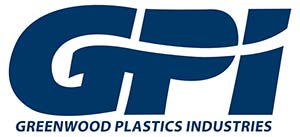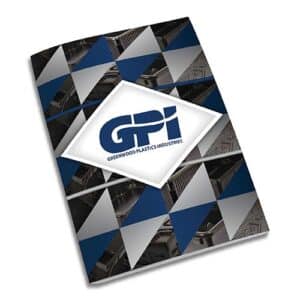Whether you’re a DIY enthusiast or working on a large project in an industrial setting, taking on a new thermoforming job opens up a whole world of possibilities.
Transforming flat thermoplastic sheets into intricate three-dimensional objects is an exciting process that requires careful planning, innovative thinking, and smart execution.
If you want to take your manufacturing game to the next level, we’ve got you covered with 5 tips for high quality thermoforming results.
Tip #1: Choose the Right Material

Selecting the right type of thermoplastic material is a key decision that can make or break the success of any thermoforming job. Let’s delve into the reasons why.
Aesthetics play a big role in defining the overall look and feel of a part. Thermoplastics come in a variety of options in regard to transparency, gloss, color vibrancy, and texture. If you will be creating three-dimensional items where aesthetics and brand identity are especially important, your selection of material can significantly influence the appearance and perception of the final part.
Mechanical properties are also crucial for achieving superior durability and functionality. Different plastics have varying strengths, flexibility, and resistance characteristics that make them suitable for specific applications.
For example, in the automotive industry, you’ll need a material with excellent impact resistance and heat stability to ensure the safety of the driver and passengers.
Cost-effectiveness is another aspect to evaluate. Factors such as availability, raw material costs, tooling costs, and production efficiency all contribute to overall expenses. Striking a balance between cost and performance is the best way to maximize profitability.
Tip #2: Optimize the Mold’s Design

Engineering a well-designed mold is imperative to thermoforming a part with accurate dimensions, uniform wall thickness, and a quality surface finish.
To perfect a mold’s geometry you need to consider elements that facilitate proper material flow and release such as draft angles, fillets, and radii. You will also want to analyze undercuts and decide if features like vents and ejector pins are needed.
Below are several benefits of optimizing a mold:
- Minimizes the risk of irregularities such as warping, thinning, and improper material distribution
- Enables faster cycle times, boosting production output while reducing labor costs
- Maximizes efficient material usage, curbing waste, and scrap
- Reduces setup time and the need for adjustments during production
Leading thermoforming companies, including the experts at GPI, rely on computer-aided design (CAD) software to design molds. This sophisticated software empowers engineers to fine-tune every detail and make modifications before the mold ever hits the production floor.
Tip #3: Control the Heating Process

Proper temperature control enables accurate shaping of thermoplastic sheeting. This precision leads to an exact replication of the mold’s contours.
If this step isn’t managed effectively, it will be difficult to maintain part integrity and achieve tight tolerances. To lower the risk of stress-related defects, the material needs to not only be heated to the correct temperature but also done so consistently and evenly.
Rapid or uneven heating can cause thermal stress in the plastic, leading to warping, distortion, or uneven thickness. Conversely, inadequate heating can lead to distortions that compromise the part’s aesthetics and performance.
- Here are a few recommendations for improving the regulation of the heating process in an industrial environment:
- Incorporate thermocouples or infrared sensors to measure the temperature throughout the heating zone.
- Establish set heating times and temperature ramp rates based on the material’s properties and the desired outcome.
- Rely on simulation and prototyping to fine-tune the heating parameters.
- Invest in a thermoforming machine with dual or multi-zone heating systems so different areas of the sheet can be heated at varying temperatures (pictured below).

Tip #4: Utilize a Plug Assist

Thermoforming parts with deep sections or entire objects that have deep areas can present some challenges.
The force of the vacuum has a tendency to thin and stretch the material at the bottom, leading to weak and uneven areas. Using the plug assist technique can be a good solution to this problem.
If you are not familiar with a plug assist, it is a special tool that aids in pushing the material down into the mold’s deeper sections, ensuring uniform thickness throughout the part. Basically, it acts as a counterforce to the vacuum, supporting and distributing the material.
Plug assists come in several forms and are usually made from wood, epoxy, or aluminum. The choice of material largely depends on the size and complexity of the part.
Tip #5: Ensure Correct Part Alignment

During the forming stage, it’s essential to ensure the material aligns with the tool face to achieve the right texture and uniformity in the final part.
When the thermoplastic material overlays the mold, it conforms to its silhouette. This allows the texture of the tool face to be replicated onto the surface of the newly produced part.
In addition to guaranteeing texture continuity, proper part placement also facilitates smoother part ejection. This, in turn, reduces downtime and ramps up productivity. The variation from part to part will be minimized as well.
Be prepared for the possibility that the surface of the part opposite the tool face may have a smoother texture. This surface might also contain uneven ridges and bulges, which could be a concern depending on the intended function of the part.
And That’s a Wrap
Manufacturers, engineers, and DIYers alike can benefit from applying the tips and techniques presented in this blog. Regardless of the size or scale of the project, implementing these practices will increase your chances of success and help you create high quality thermoforming parts that bring your vision to life.
Our team is always interested in hearing what our readers have to say. Please leave questions and comments below, or read more about our thermoforming process here.
If you need custom thermoforming for your next project, request a quote from GPI.



